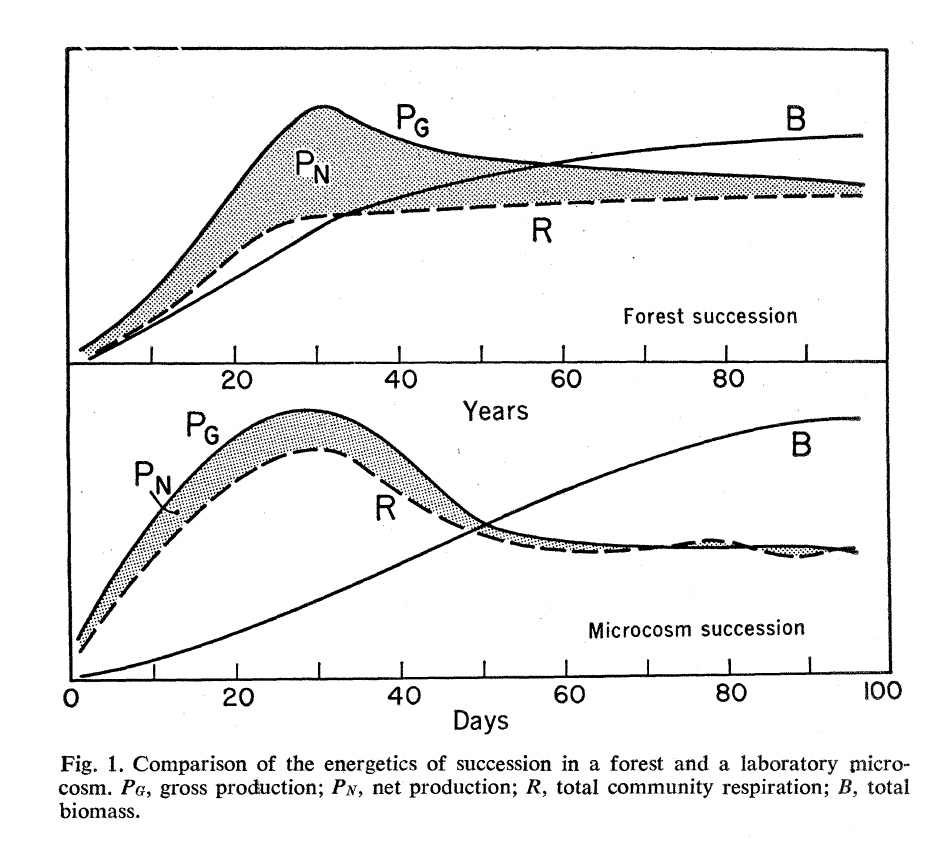|
Understanding carbon (C) dynamics in ecosystems is important for understanding ecosystem energy balance over time, the biological processes within an ecosystem, and projecting ecosystem responses to global climate change. C molecules are a principle element in most biological compounds used by organisms. At the ecosystem scale, the net C balance is defined as the difference between the amount of C entering versus leaving the system, or the change in C storage over time; and because ecosystems are complex the net ecosystem C balance must quantify the C flux of several important C pools, gaseous, inorganic and organic. The gaseous C pool is mainly CO2, but also contains methane and other volatile organic C gas derivatives [e.g., isoprenoids]. The inorganic C pool is comprised of elemental forms of C [e.g., carbonates], which are usually found in the soil, that are freely available to plants and microbes. The organic forms of C are the biologically-bound forms of C in the ecosystem and are found in alive or dead biomass. The amount of C in each of the C pools depends on the energy balance of the ecosystem and rate of biological processes that can transfer the C from one pool to another. Photosynthesis, or the anabolic, autotrophic production of organic C compounds using CO2 and sunlight, is the primary process that moves C from its gaseous forms into organic forms. Decomposition is the breakdown of organic material transforming its C into simpler, inorganic elemental forms.
The amount total biomass in an ecosystem is a function of the balance between photosynthesis and decomposition, minus respiration (the amount of C used in metabolic processes), and the residence time of C in the organic vs. inorganic pools (Figure 1, Odum 1969). As plants sequester C from is gaseous form, some of the C may be transforming it into sugars, carbohydrates which in turn may be returned to gaseous C pool via respiration, but some of the C may be stored or converted to more complex organic forms within the plant (e.g. tissues), thereby fixed into the inorganic C pool. C from the organic pool must be converted to an inorganic form before eventually returning to the gaseous C reservoir. Usually, this happens through the decomposition of necromass (or dead biomass), where microbes and other decomposers catabolically break down biological tissues containing organic forms of C, converting them to simpler inorganic forms. These balance of these processes is termed the net ecosystem C balance, and is limited by the rate of the biological process at the organismal level, and the abundance of that organism in the ecosystem. The majority of terrestrial ecosystems are C sinks, meaning that the ability of plants to sequester C via photosynthesis largely outweighs ecosystem C release through respiration, decomposition and lateral C transfer (leaching etc.), resulting in the accumulation of biomass over time. As terrestrial ecosystems mature, the accumulation of biomass asymptotes as the net positive difference between productivity and respiration peaks and then decreases. Plants have a variety of strategies for accumulating C via photosynthesis, and rates of C uptake by plants (i.e., assimilation rates) vary and are determined by their physiological traits (stomatal density, leaf area, leaf turnover rate, photosynthesis type etc.). This leads to differences in residence times for C in the biological component of the C cycle, and differences in the chemical makeup of plant biomass. At the ecosystem-scale, this residence time is a function of the transfer of C from primary producers to higher trophic levels, which mainly happens through herbivory, or the consumption of some form of plant biomass. Plant material quality is often characterized by its nutrient content or the C to N ratio, with material that has more N content being considered higher-quality. Higher quality plant materials are preferentially selected by both herbivores and decomposers, influencing C and nutrient cycling rates. ♠
2 Comments
|
AuthorJames "Aaron" Hogan is an ecologist interested in plant biodiversity, forests and global change. Archives
November 2021
Categories |




